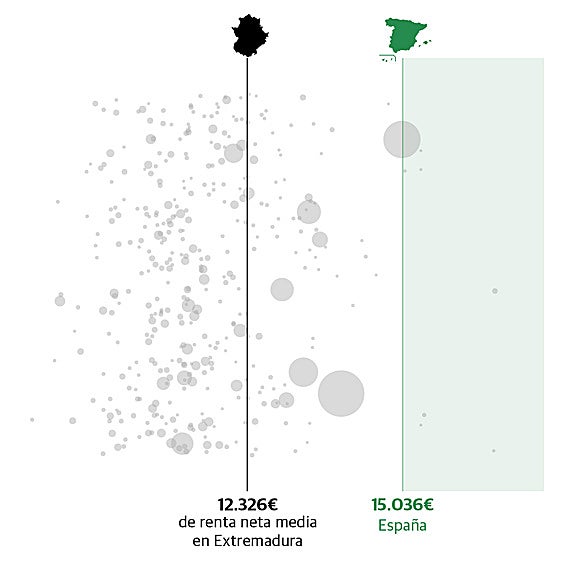Vegetables on the barbecue? Well, of course!
We tend to associate barbecues with meat, but cauliflower, pumpkin or even the humble carrot takes on a whole new flavour cooked this way
CARLOS BENITO
Friday, 5 August 2022
In this country, if you say the word 'barbecue' people immediately start thinking about the meat counter and its vast range of goodies to choose from. Burgers, ribs, steaks, sausages... the choice seems almost endless.
This method of cooking has become very fashionable in recent years: you only have to see how the barbecue section in supermarkets and hypermarkets has grown, and how there are special offers at the beginning of every summer season to tempt those who have not yet ventured into the delights of barbecue cookery.
All of a sudden, we all seem to have neighbours or friends who have become master barbecue chefs and speak knowingly about the different models of barbecues, charcoal, wood and burgers. But this growing interest is generally somewhat conservative in nature: it is the barbecue as a communal celebration of carnivorousness, the aroma and animal juices, the sensuality of cookery which we used to envy so much when we saw it in films and on American TV programmes.
Because it is also the case in this country that when you say the word 'vegetable' most people think about some type of veg boiling in a saucepan. Maybe boiled for too long, boiled sadly, until it becomes a pitiful shadow of what it once was and what it could have been and our teeth meet no resistence whatsoever when we eat it. But vegetables are so delicious when they are cooked on the barbecue!
"In Catalonia, barbecued vegetables are more of a tradition, with the calçots and mushrooms, but they are rare in the rest of Spain: we only think of them as a type of garnish, if at all, because normally we don't go beyond sausages and burgers.
We have to overcome this myth that a barbecue is synonymous with cholesterol and bad habits and open people's minds so they try broccoli or artichokes, which are delicious cooked this way.
Even I have been surprised at the flavour of some vegetables that we are not accustomed to cooking on a barbecue: if you give me a pork chop and some cauliflower, I'll go for the cauliflower, any day," says Juan Manuel Benayas, the son and grandson of charcoal merchants (as a child he helped out in the family business in Calle Embajadores in Madrid and now supplies hundreds of restaurants) and is founder of the first barbecue school in Spain.
Benayas has published a book about barbecuing vegetables called Entre Brasas Veggie, and he likes to point out that in countries such as Germany, Sweden and Holland, the commercial promotions for barbecues which normally start in March include products such as kale and broccoli in their images.
"Culturally, we associate this type of cooking with meat, but the grill, the smoke and the fire are actually elements of cooking that can be used for anything," he explains.
"They provide incomparable, inimitable flavours and anything cooked this way will gain a lot, including vegetables," agrees Juan Martini, the chef at the Barcelona restaurant Fat Barbies, which opened a second branch dedicated to barbecued vegetables this year, called Fat Veggies.
But let's be honest here: what sort of faces are our friends going to pull if we invite them to a barbecue and serve them asparagus and cauliflower?
"It would probably come as a bit of a shock, and a disappointment at first," Martini admits. "We fire up the barbecue for special occasions and those are the ones we associate with meat: the challenge for the host is to prepare a variety of vegetables without the guests missing their steak.
And it is a big challenge, but it is perfectly possible. It happens to us: our clientele at Fat Veggies are not 100 per cent vegetarian, a lot of people are curious, are prepared to do away with stereotypes and they leave without having missed their pastrami and spare ribs," he says.
In a way, barbecuing overcomes the main problem with the way we cook vegetables: we often overcook them, as we learned to do from our mothers and grandmothers, and we ruin their texture, their flavour and a lot of their nutritional value. As Juan Martini points out, "we don't give them a chance to shine".
We are often surprised by the taste of vegetables when they are cooked in a conventional oven: carrots, for example, are nothing like those slices which give more colour than flavour to purées, or the humble addition to meat stews.
They become small explosions of flavour, intense and complex treats which make you think of earth and autumn.
Barbecuing takes this revolution to the extreme and enables us to rediscover ingredients we thought we knew so well.
Even tinned asparagus
"Anyone faced with reluctance can start by introducing vegetables as an accompaniment. On my courses we make a side dish of barbecued oyster mushrooms with garlic, oil and parsley and people go mad over it. Things like that, or like asparagus, are a good introduction. People usually only cook green asparagus this way but the white ones, even from a tin, work perfectly as well: if the tinned asparagus is big and a bit hard, put it on a hot grill and it will be much better. And yes, if you roast cauliflower in a barbecue oven at a low temperature and finish it off with a garlic and curry dressing, you will have a dish that will surprise most meat-eaters," says Benayas, enthusiastically.
In his book there is no lack of 'usual suspects' like aubergine, courgette, potato and sweet potato, but there are also some unusual ideas including barbecued watermelon with goat cheese.
"Pumpkin is another thing that surprises people," says Martini. "We use the 'potimarron' variety, which has less fibre and a juicier texture. When you barbecue it, it takes on a very powerful flavour and aroma and a very attractive texture. People love it! We also smoke celery root to make a sort of celery pastrami, with a chewy texture which is more like meat than a vegetable. And then there are more conventional things: peas, asparagus, mangetout, carrots... barbecuing gives a depth of flavour that people aren't used to in a vegetable," he says.
Juan Manuel Benayas says it is easier to get the hang of barbecuing vegetables than it is meat. "There are a lot of tricks you can use. The first is to separate them by size in order to know how to cook them. The big ones, like a whole cauliflower, we would prepare with indirect heat; the small ones like asparagus, over direct heat.
The six rules of barbecuing vegetables:
When switching from one food to another, clean the grill with a metal or wooden brush ("an onion or a lemon can work just as well," says Benayas). When you have finished cooking, clean the grill with a degreaser.
2. Keep control of the heat.
If you don't have a pyrometer, there is the seven-second rule: put your hand ten centimetres from the grill and count "one, two, three...". If we have to take it off before 3 because we're burning, it's about 300 degrees. If we get to 6 or 7, it will be about 200. At 8 or 9, it will be 180 or less.
3. Don't be constantly turning the veggies over
"Not making the food dizzy is essential to obtain a good caramelisation," says Benayas. Just one turn or, at the most, a couple of turns should be sufficient.
4. Apply pressure? Not at all necessary
Squashing vegetables (or a burger) to make them cook faster is a mistake, no matter how much we have seen it on TV. It only results in losing juices.
5. Adapting to the product.
There are many accessories available that make barbecuing much easier.
"Everything can be cooked on a barbecue. Peas, for example, can be cooked on a grill using a fine-mesh metal strainer. Spray the strainer with a little oil and it can be used to sauté the peas," suggests the expert.
6. Tempering the raw material.
Food should always be taken out of the refrigerator at least one hour before cooking, so that it can come up to room temperature. And do not put food on the grill until it is very hot.
When you are cooking for a lot of people, you blanch the vegetables a little beforehand because that way you gain time without losing much. And I always recommend using oil in a spray, especially for vegetables you are going to cook on the grill: a light spray makes them crispier and even more delicious," he says.
He also warns against getting impatient - "you have to wait until the flames have died down and there are just embers" - and recommends briefly pre-cooking some vegetables and spraying them with oil or vinaigrette:
"That way they brown evenly and not too much. There's a big difference between being nicely charred and burned!" he says.
Afterwards, when the vegetables are on the plate, it is important to just tuck in. The flavour will surprise you, and any scepticism about barbecued vegetables will become a thing of the past.



-kVFI--1968x1216@Diario%20Sur.jpg)